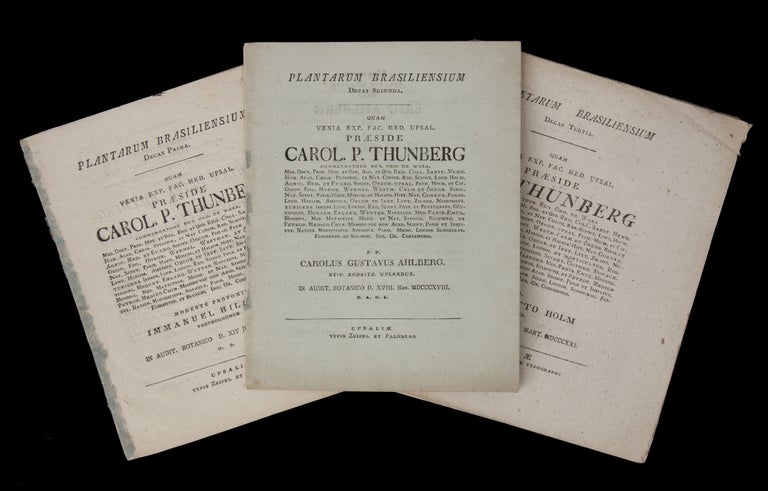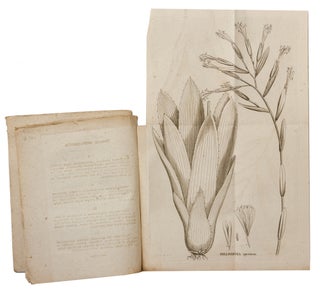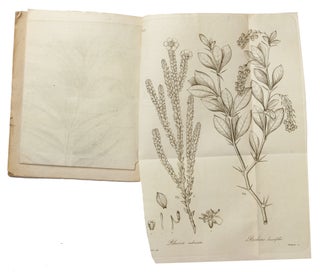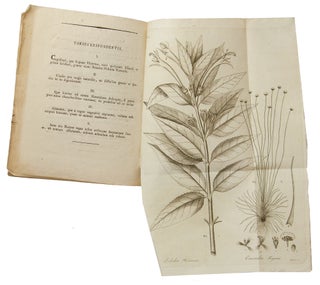Plantarum brasiliensium. Decas Prima / Secunda / Tertia.
Three separately published parts. 4to. [20 x 16.5, 20.5 x 16, and 21 x 17 cm]. I: (1) f., 16 pp., with engraved plates of Lobelia westiniana [31 cm x 20.5 cm] and Rhexia imbricata & Berberis laurifolia [30 cm x 20.5 cm]. II: (1) f. 11 pp. III: (2) ff., 13 pp., engraved plate of Billbergia speciosa [35.5cm x 22cm]. Title pages slightly dusty. Part II unbound. Generally excellent. A rare series of three consecutively printed dissertations (2 of them illustrated) on the flora of Brazil, diligently recorded in standard Linnaean form by Carl Thunberg, Linnaeus’ foremost disciple and the greatest botanical explorer and collector of his day. The specimens were collected by Georg Wilhelm Freyreiss in his travels to Minas Gerais, Brazil in 1814-15. Only eight species out of the thirty described by Thunberg in these booklets had been studied until recently (Moraes, Smedt, and Hjertson). Most of the specimens can still be found today at Uppsala University. Although the dissertations are separately signed by Billberg, Ahlberg, and Holm, Reyment notes that the work in each case was Thunberg’s, since it was customary for the professor to write the thesis which his students would then defend in public. Each dissertation is in the form of a scientific description of 10 different species, of which several appear to be named and described for the first time: for example, Billberg’s thesis notes two Lobelia, one Begonia, and one Euphorbia; Ahlberg’s several orchids (Epidendrum, Cymbidium sp.), nightshades (Solanum sp.), and a type of wild basil (Ocymum); and Holm’s a species of bromeliad (Billbergia speciosa). Two of the theses are illustrated with detailed depictions of the specimens involved, on large folding engravings. Carl Peter Thunberg (1743-1828), rector of the University of Uppsala, earned the epithets “father of South African botany” and “the Japanese Linnaeus.” Of the disciples whom Linnaeus sent off on far-flung collecting journeys, Thunberg traveled the furthest, reaching South Africa, Indonesia, Japan (where in order to be admitted he had to pass himself off as a Dutch Protestant merchant), and Sri Lanka. Thunberg is cited in naming some 254 species of plants and animals (though significantly more plants than animals) and authoring more than 160 monographs and scientific papers. *Pritzel 9314; BMNH 5, p. 2110; Stafleu & Cowan 14397; G. Eriksson in DSB XIII, 391-3; not in Borba; R. Reyment, “Carl Peter Thunberg (1743-1828), The Founder of Japanese Botanical Research”; Moraes, Smedt, and Hjertson, "Notes on the Brazilian Plants Collected by Georg Wilhelm Freyreiss and Published by Carl Peter Thunberg in Plantarum brasiliensium," Harvard Papers in Botany 19/1 (2014): 123-132.
Price: $2,850.00




